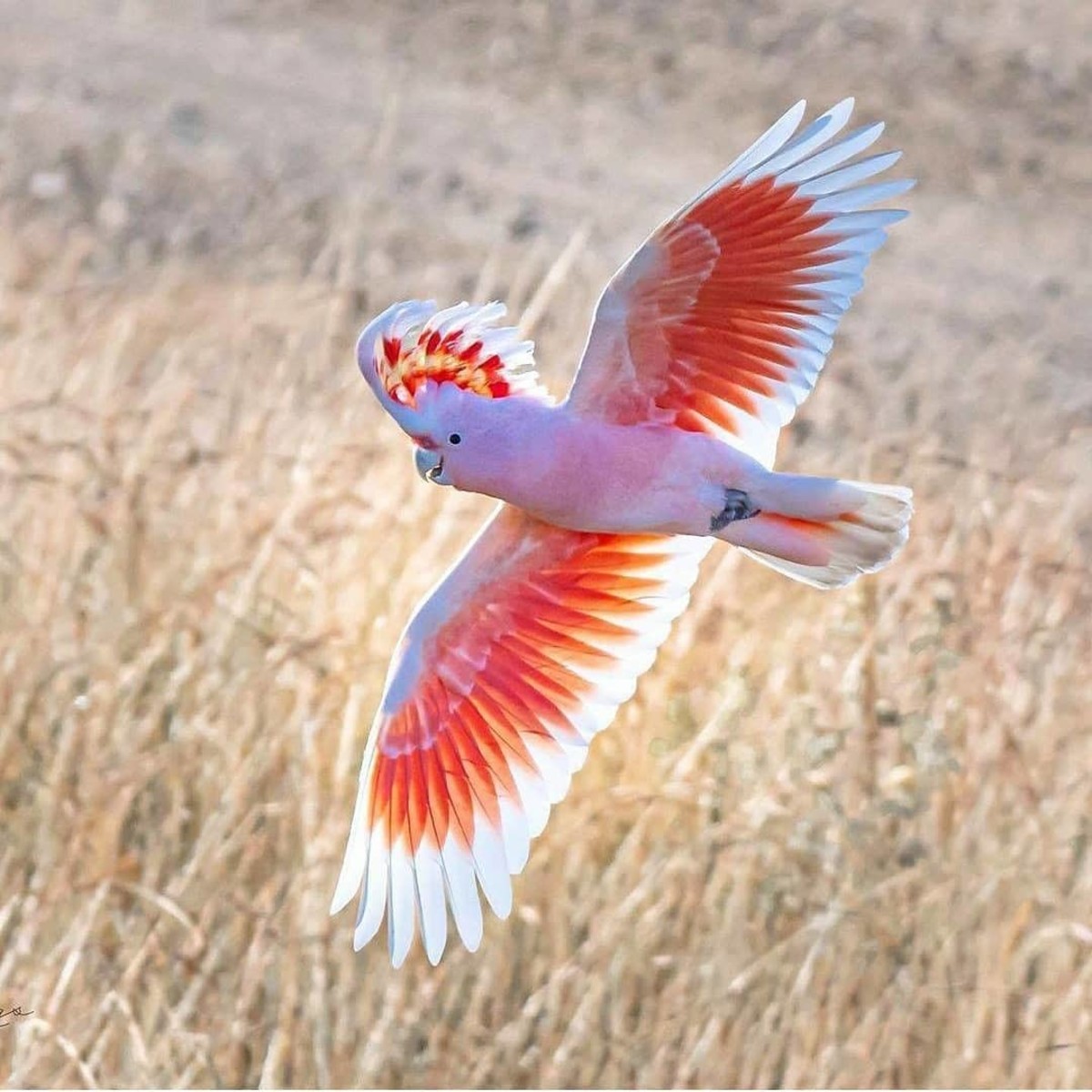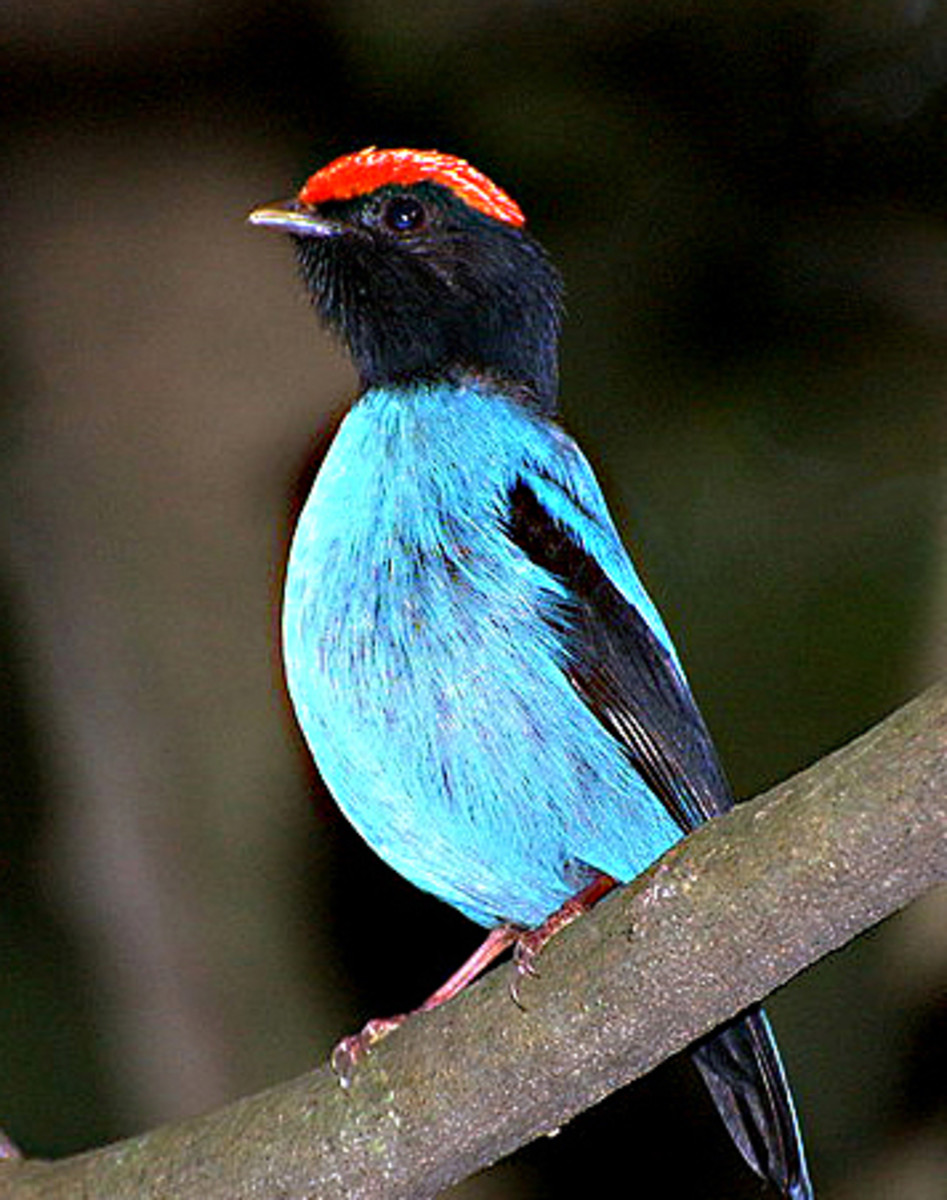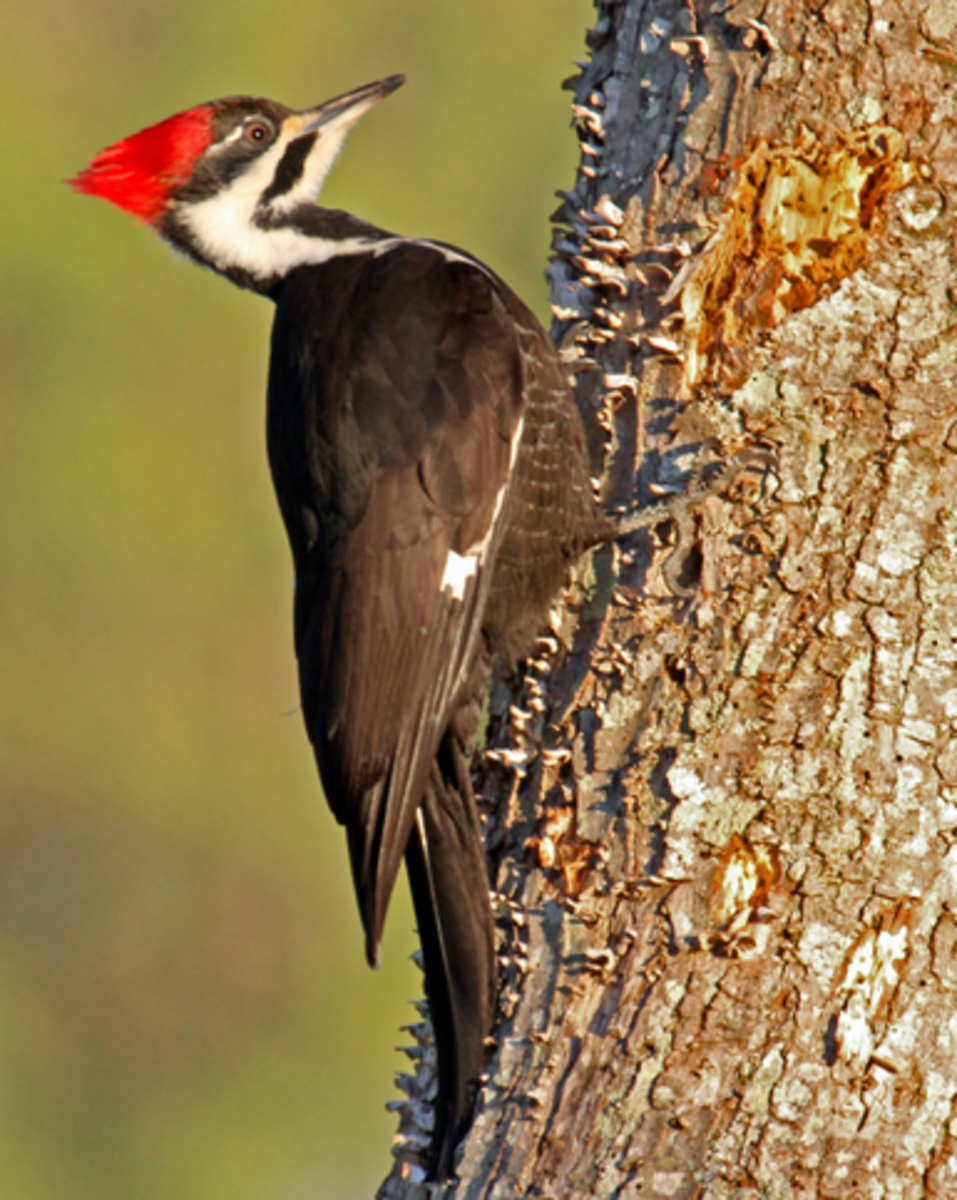The Beautiful Blue-gray Gnatcatcher
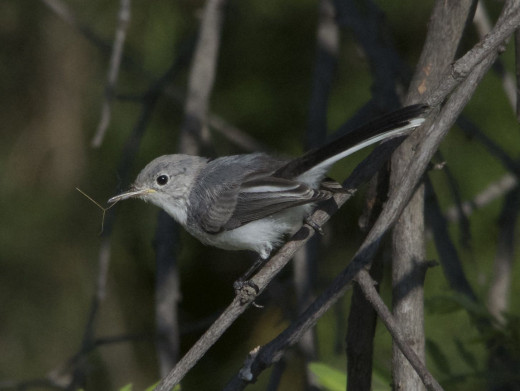
A Woodland Songbird
A neotropical, woodland nesting migrant, the Blue-gray Gnatcatcher might be easy to see at times, but is not easy to photograph. These birds are canopy nesters, with an open cup, conelike nest placed upon a horizontal tree branch. There are generally four to five eggs per clutch, and in the southernmost areas of the United States, they usually raise two clutches. The diet of both the adults and young are almost exclusively insects, which makes sense, as their protein needs are very high due to their high energy levels. The immature birds have a bit of an edge on their parents regarding foraging, as they can move about with just as much skill around the thickets due to their diminutive size.
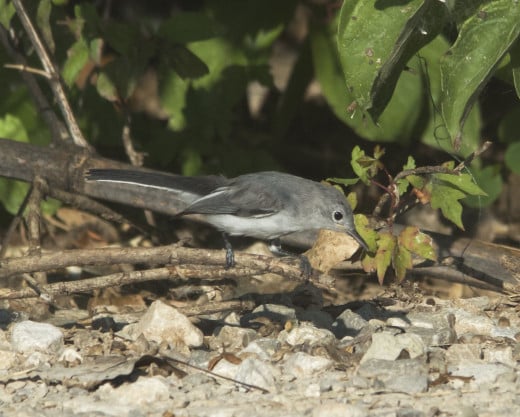
A Warbler-like Flycatcher
This tiny, very active bird has a thin dark bill, and a white eye ring with blue-gray upperparts, a white underside, and flicks the long black tail from side-to-side. The undertail is nearly all white, and due to tail movement, it tends to disturb and raise insects for consumption. The Blue-gray Gnatcatcher resembles a warbler with the thin bill and slim torso. The male in breeding plumage has a black eyebrow, which the female is clearly missing.
It behaves like a flycatcher to some degree, taking bugs on the wing, but will also forage in both deciduous trees and conifers. This gnatcatcher may also strike larger insects against a branch to make them easier to handle, favoring spiders, caterpillars, beetles, flies, and mosquitoes. However, they are not just limited to this range of protein.
Its call is a wheezy zeet, spee, or zwee combination and chip sounds, enjoying the outskirts of deciduous woodlands and thickets near water. It moves rapidly and erratically about while it forages on and about lower- and mid-range leafy branches.
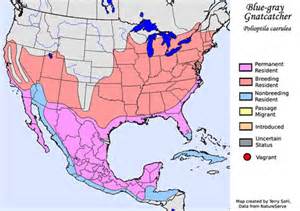
Where in the World is This Bird?
It is a common breeding bird in both southern New England to southeast regions, as well as west of Texas and encompasses the central western part of the US. Their range is veering northward, especially with global warming’s reaches, especially in the east.
The only true migratory gnatcatcher, this is the most northern species. At this time, this naturally occurring bird in Mexico, Central America, Cuba, the Bahamas and general areas has a worldwide population of fifty-seven million, extending over 6.7 million kilometers. It is also a bird of least concern in the present, but don’t let that deter you in observing such a personable and unpredictable little bird. According to the Christmas Bird Count, the population of this gnatcatcher has had a small increase over a forty-year period.
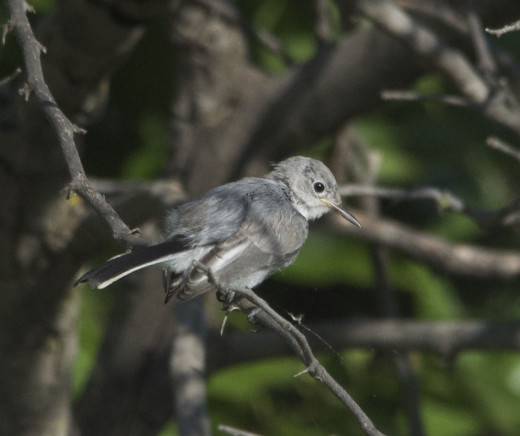
Parasitism
They are also subject to cowbird parasitism, which has been known to have an impact on localized populations. Where they were observed in Stillwater, Oklahoma, a population of approximately a dozen Brown-headed Cowbirds are residing in the vicinity of nests. However, this has been a good year for the gnatcatchers with plenty of available insects due to a sizable amount of rain for the past two years.
Giving a Helping Hand
Surprisingly, the two immature youngsters were observed handling their own feeding needs, while a parent looked on vigilantly. There was a recently fledged Eastern Phoebe on the ground nearby, hoping to be fed by its own parent. To show that animals really are sentient beings, the adult Blue-gray Gnatcatcher fed the little phoebe while waiting for the adult to return. These are the kinds of co-operative efforts that occur in the animal world that we rarely see, and this is what contributes to the proliferation of some of the more common species.
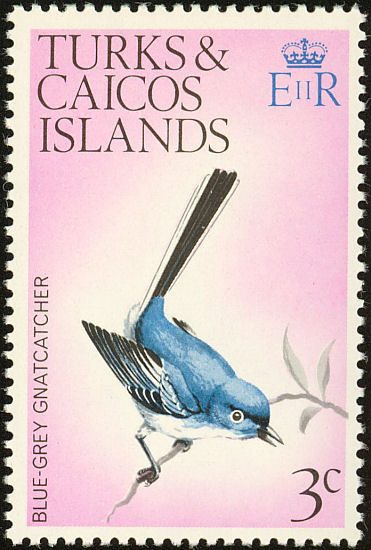
Postage Stamp Depicting Blue-gray Gnatcatcher
Turks and Caicos Islands placed a likeness of this interesting little bird on one of its postage stamps in 1973. It is part of a series of definitIve stamps, portraying wild birds. If you happen to be a philatelist specializing in avian stamps, this is a must-have addition to your collection.


